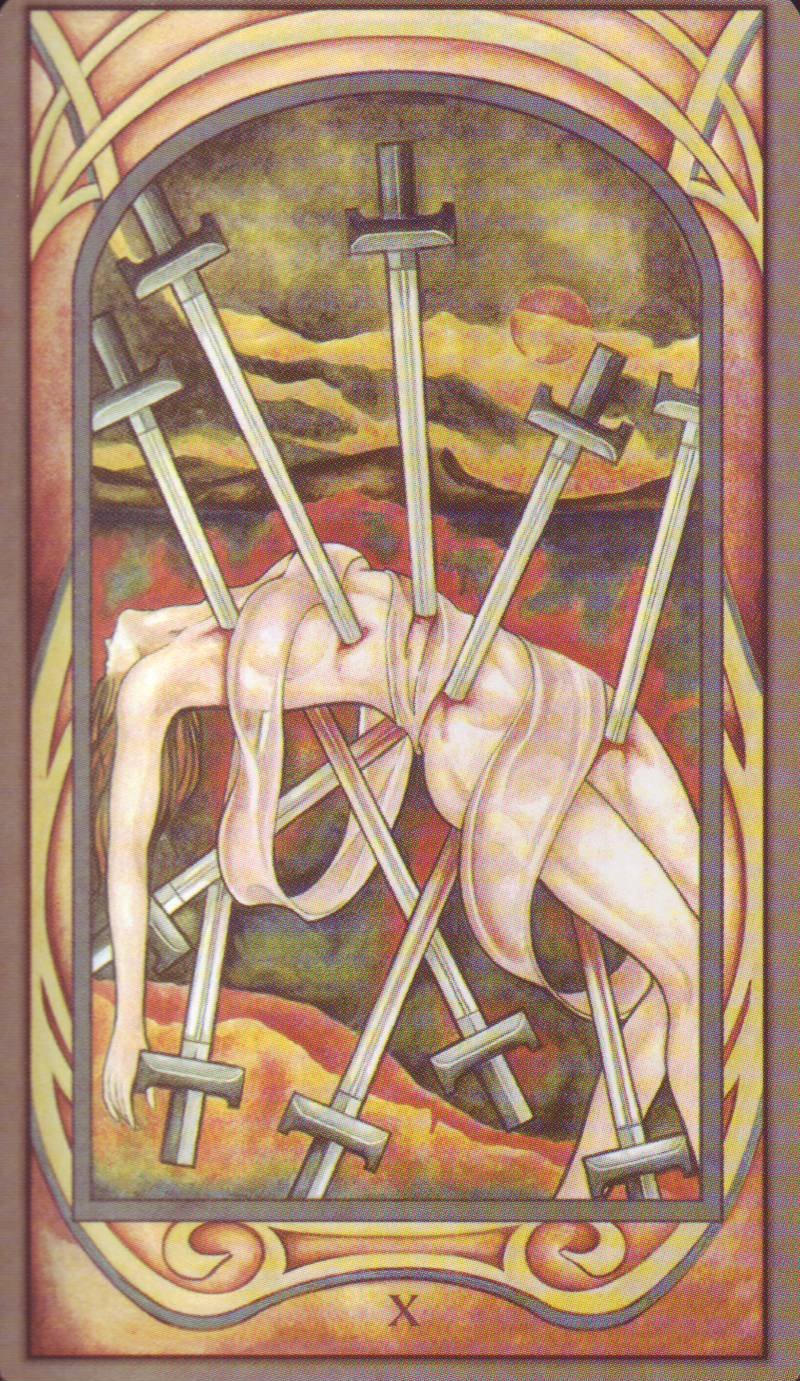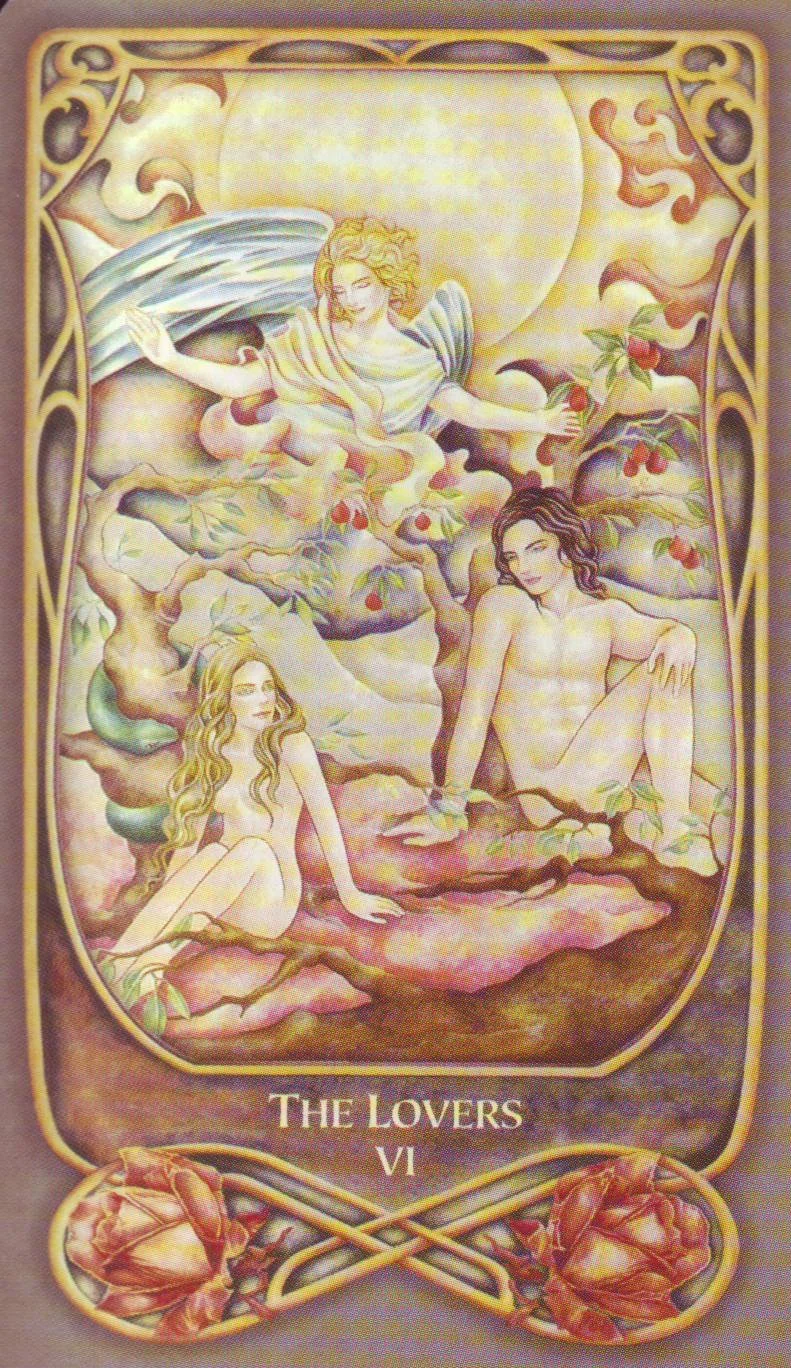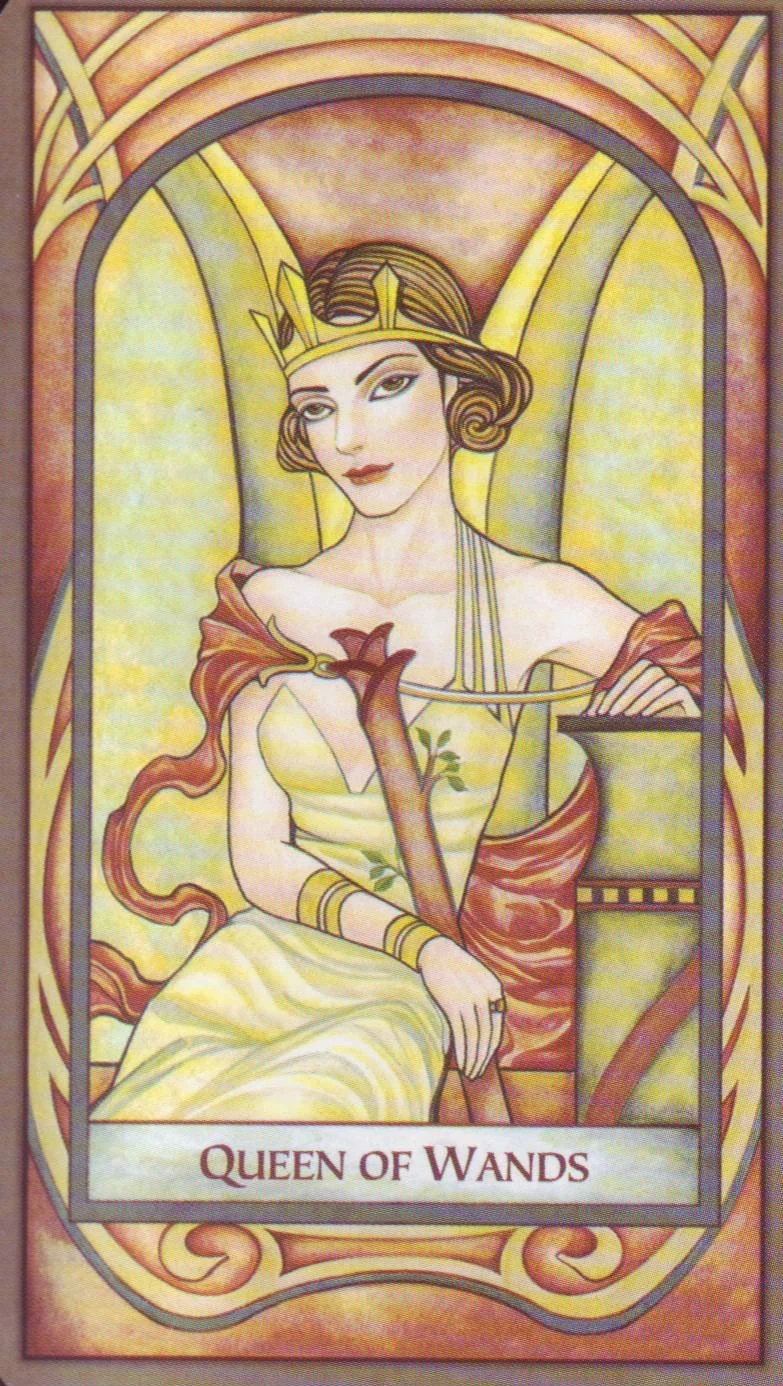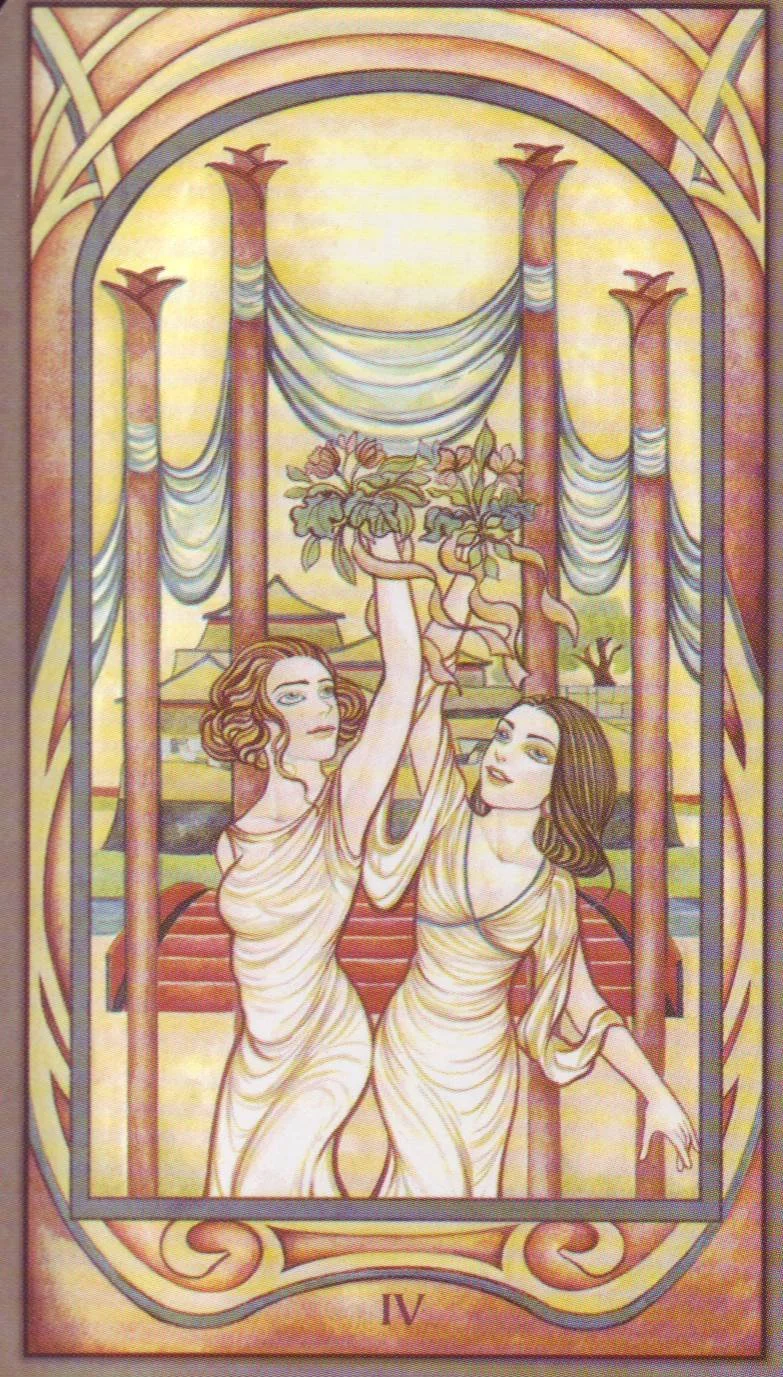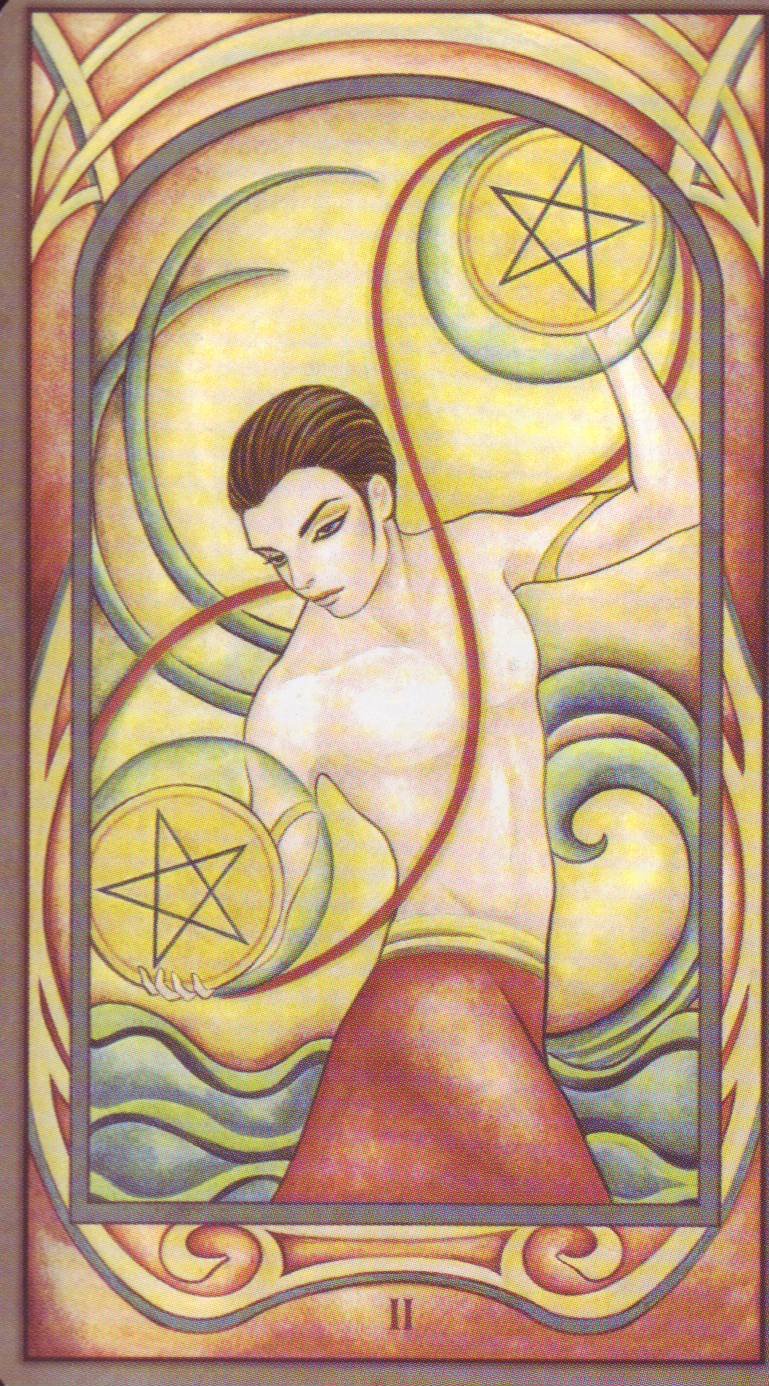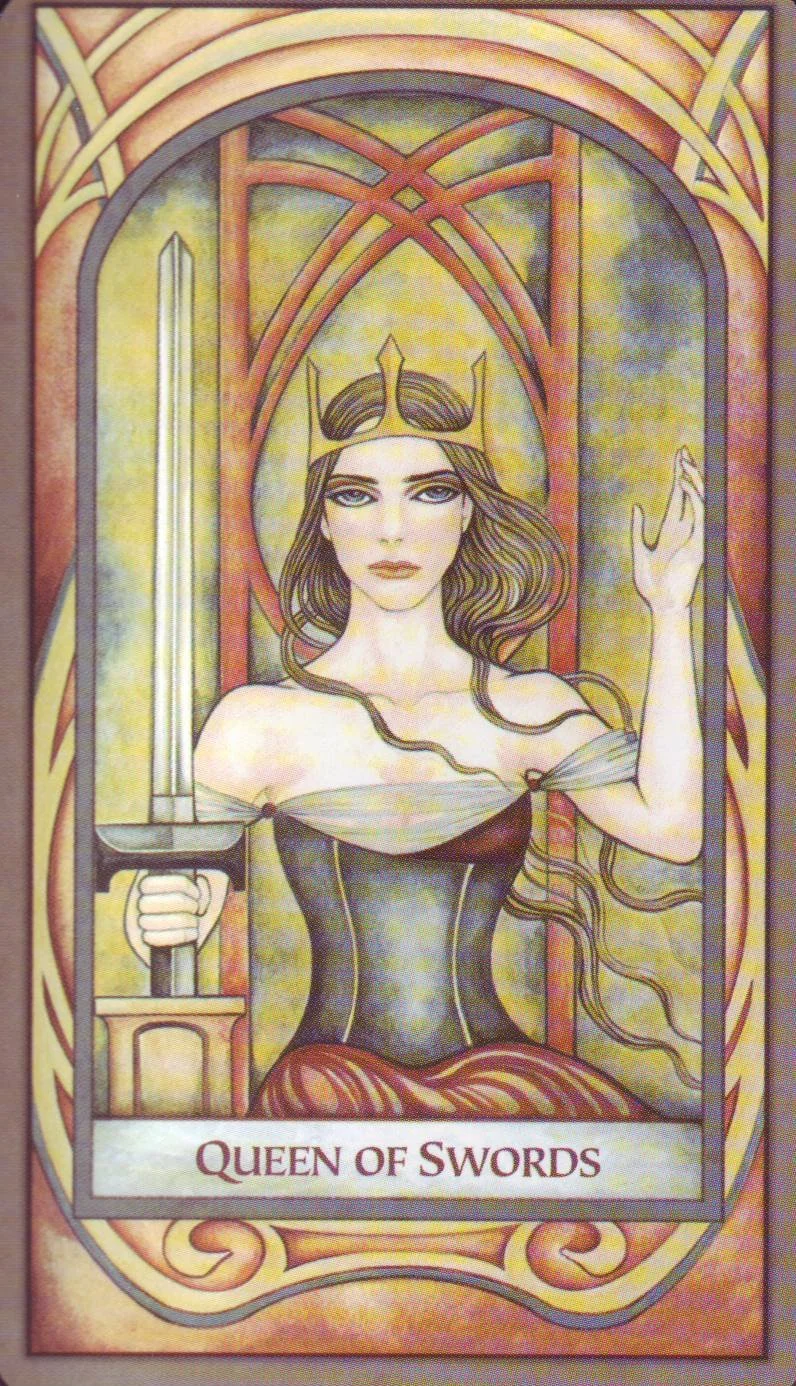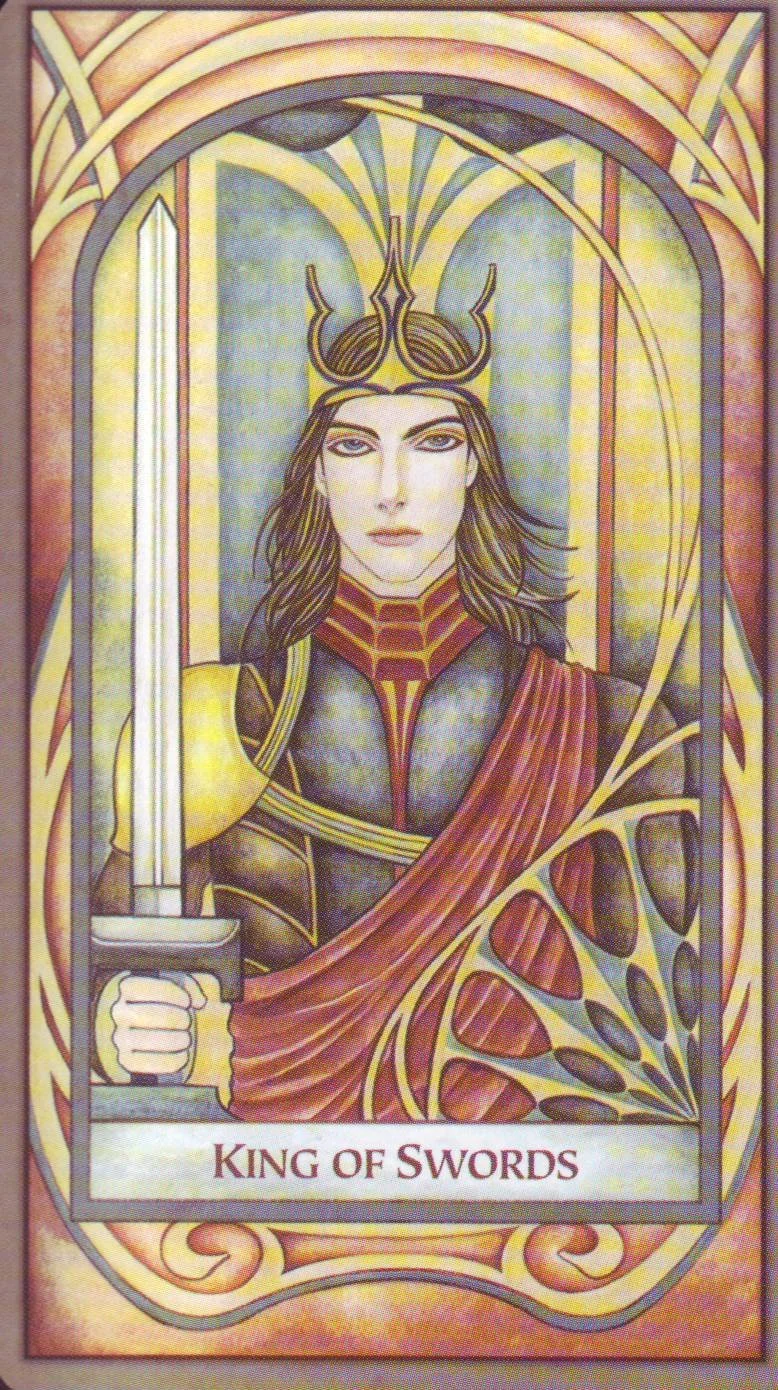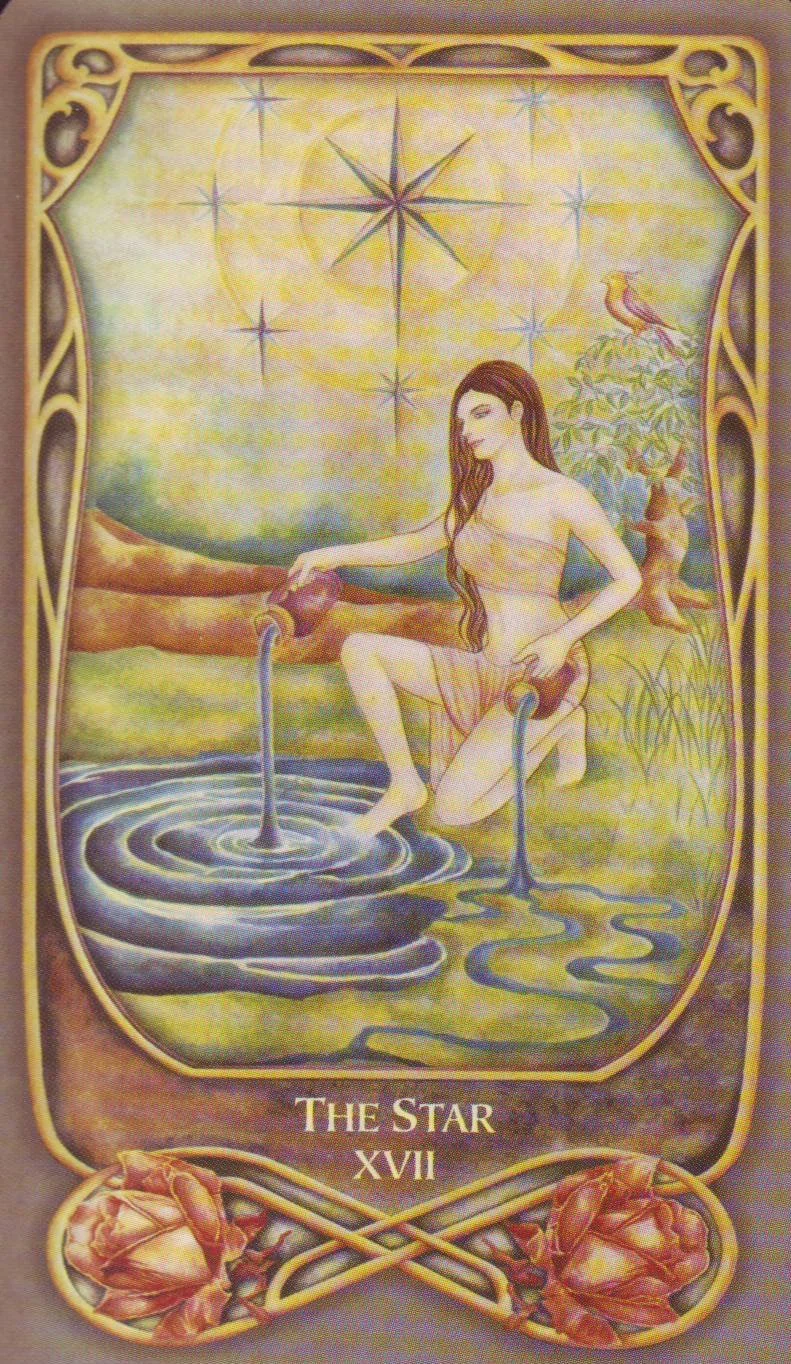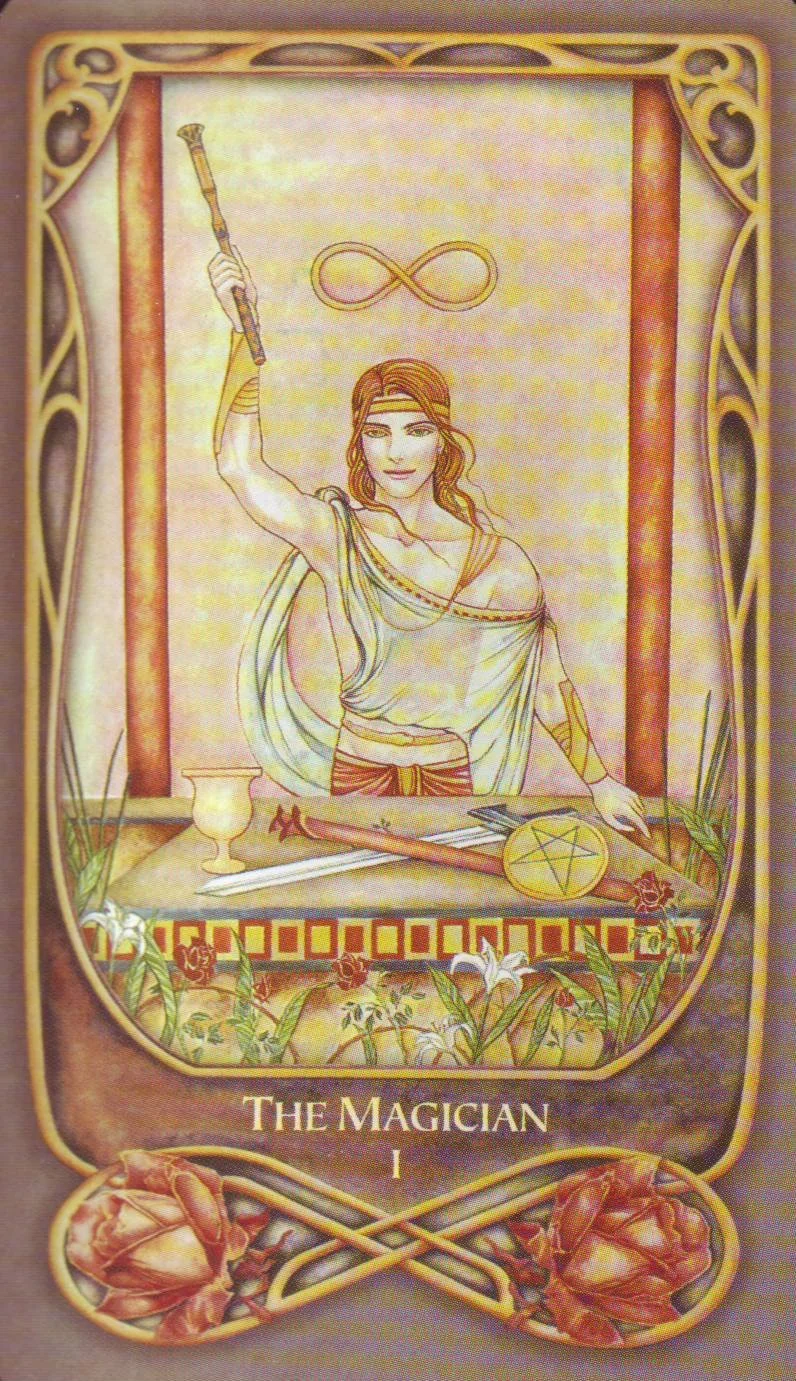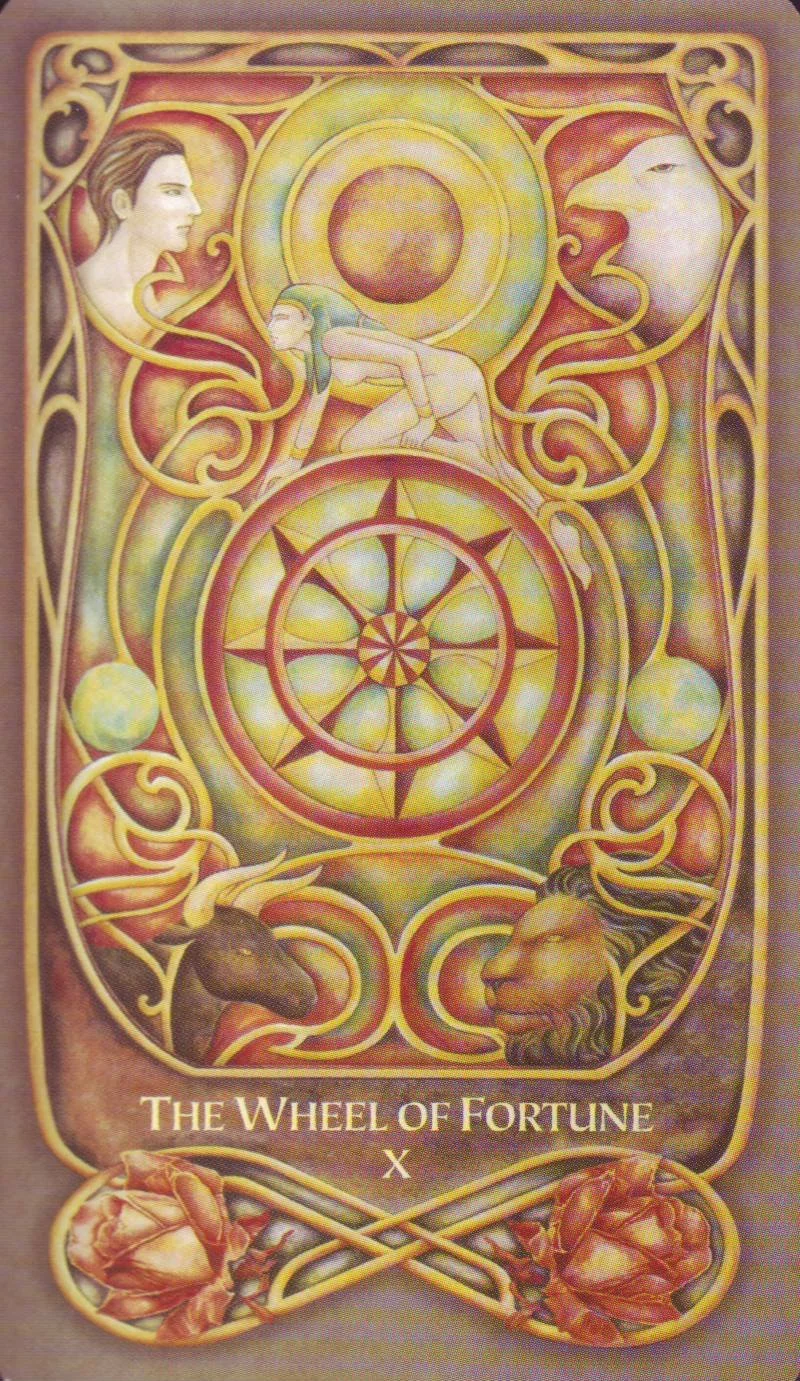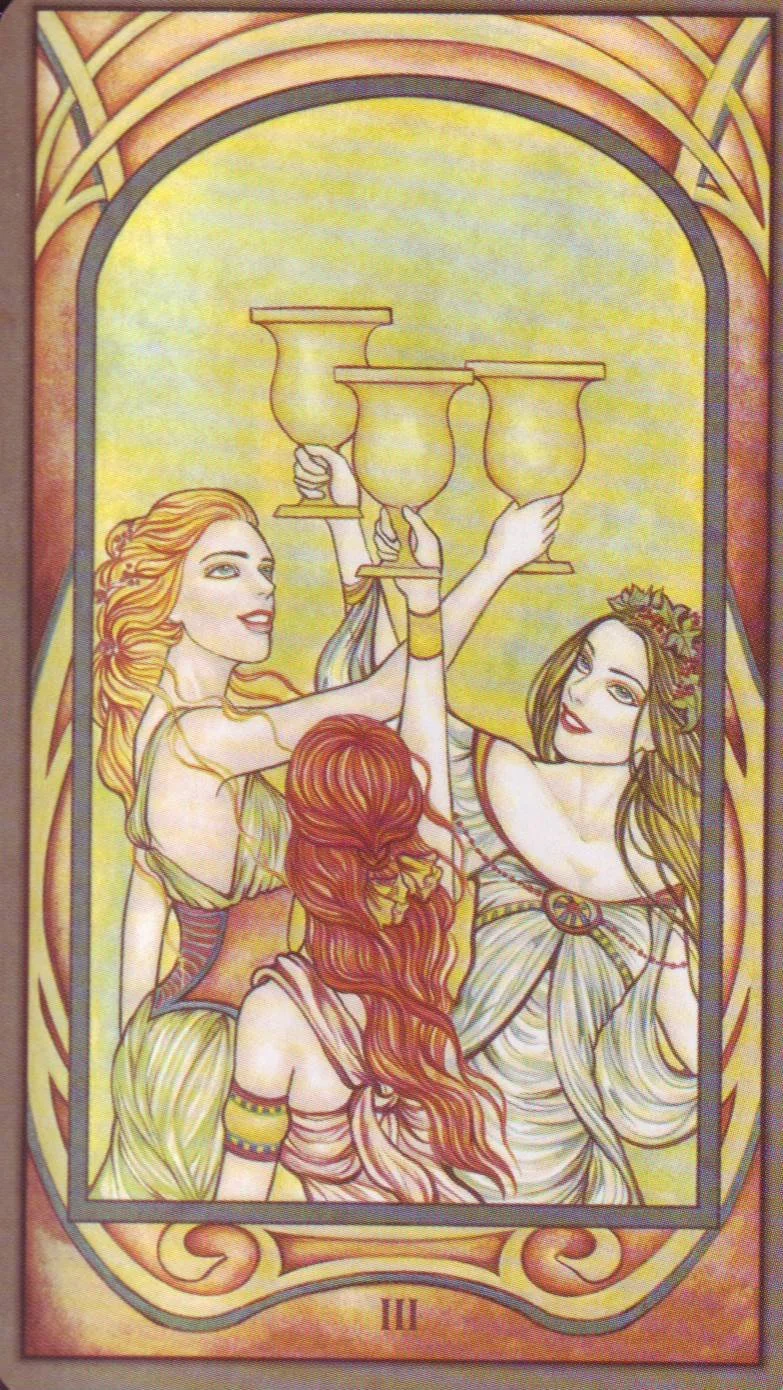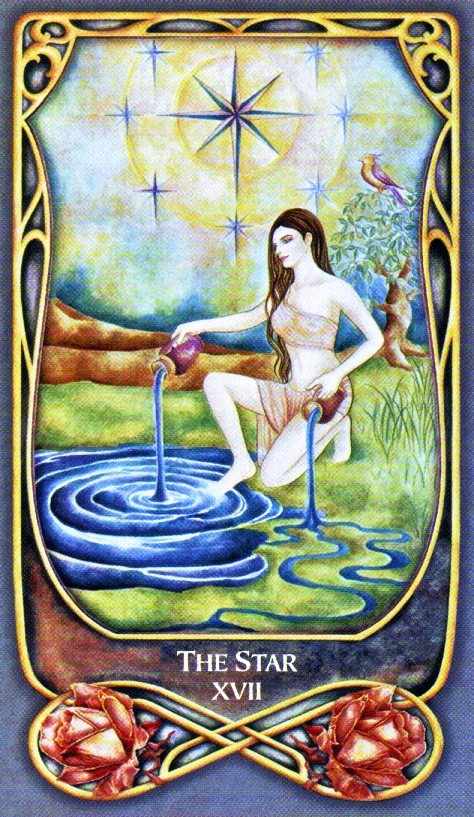
Fenestra Tarot
Overview
The best experience when discovering a new Tarot deck is that accidental find that just sort of speaks to you as you pass it by in a book store or arts and crafts shop. That is how I came across the Fenestra Tarot, its imagery seeming to draw me in from the first moment I clapped eyes on the deck. The next thing I look for, after that initial attraction, is what I call the Power Cards. These are the cards in a deck that really speak to you as you work through the imagery - the cards that you, as the reader, identify most closely with. I always approach a new deck with a tremble and some trepidation - maybe that's the Romany in me, feeling its way across the generations, reminding me that Tarot is not the mere toy that many believe it to be - a quaint way of telling tales about the Past, Present and Future. Tarot is, indeed, never a toy to be fooled with, but but a tool for the guiding of life - The Journey of the Fool!
The designer of this deck, Chatriya Hemharnvibul, has developed a rich tapestry of an art deco touched with manga style, giving her characters attractive large doe-eyes and wistfully appealing physiques, many of them androgynous, married to the deeper symbology of the RWS tradition. Fenestra is latin for windows, and this deck is designed as a series of windows filled with Chatriya's enchanting images. Her use of sheer fabrics to bring a slight touch of decency, maybe, to some of the more risque images is warming, too, or even - dare I say it? - stimulating!
Having drivvled on about the beauty of the 10 of Swords, I really need to express just how beautiful the rest of the deck is. In fact, as I am revisiting the deck for this review, I am struck again at just how rich and - good heavens, getting repetitive, Paul! - beautiful Chatriya’s images are - and falling in love with the deck all over again! Her scenes are richly developed, including much of the RWS symbology in colourful if sepia-toned acrylic paints; her women are beautiful and her men are strong and handsome - and there are a lot of androgynous characters that allow you the luxury of filling in the gender to satisfy your own needs and beliefs! As the information card the comes with the decks explains, Chatriya "beautifully blends artistic elements from her own eastern background with influences as far reaching as Egyptian history, Japanese manga, western art and classical mythology.”
As I mentioned earlier, Chatriya has closely followed the RWS tradition with this deck, keeping the Strength and Justice cards where A.E. Waite placed them for his Rectified Version of the Tarot. Additionally, all of her pip cards are beautifully illustrated in imagery that captures all of the necessary features of the RWS school, so this deck would be easy for any RWS devotoee to follow and for students to learn with. The LWB contains a little introduction to the deck and the standard card meanings and keywords, along with a write up on the Celtic Cross spread.
Details of the Deck:
Tradition: RWS
Major Arcana: 22 cards
Minor Arcana: 56 cards
Court Cards: Page, Knight, Queen, King
Fire Suit: Wands
Air Suit: Swords
Water Suit: Cups
Earth Suit: Pentacles
Designer(s): Chatriya Hemharnvibul
Artist(s): Chatriya Hemharnvibul
Publisher: U.S. Games Systems Inc., 2006
Major Arcana:
0 - The Fool
1 - The Magician
2 - The High Priestess
3 - The Empress
4 - The Emperor
5 - The Hierophant
6 - The Lovers
7 - The Chariot
8 - Strength
9 - The Hermit
10 - Wheel of Fortune
As I mention above, one of the many things I look at initially in the deck are the Power cards - those that, in Tarot circles, seem to carry the most interest and impact. Many of these are, as would be expected, in the Major Arcana - The Fool, The Magician, The High Priestess, The Devil, The Tower, Judgement and the World, but the Minor Arcana has its Power cards too - The Aces, The Kings and Queens, but also the Eight, Nine and Ten of Swords - The Terrorful Trio! In the Fenestra Tarot, the one image that sticks with me consistently is her Ten of Swords.
Every time I look at that image, it totally engrosses me. Unlike the usual RWS 10 of Swords, where a man is typically shown with the swords protruding from his back, Chatriya portrays a beautiful woman, almost naked, prone and pierced with the ten swords that give the card its name. But it is more than just an image. It has beauty and passion on a number of levels - in the artwork itself, in the female representation, in the care taken in developing the image, in the beauty showing the love the artist has, and the viewer sees, for the victim. The woman seems to be floating, suspended by the Swords piercing her, showing both Power and the Passion - Power in the sense of absolute ownership of that woman - ownership enough to give the owner the right to do to her what they have done. Passion in both the will to perform those actions, and the need to do them. What could possibly have driven the perpetrator of those acts to even want to do that? What has the victim done to deserve such atrocities enacted upon her? And why are the swords driven into the locations they are? Some are definitely sexually driven, while others are positioned to cause pain and suffering - but none to distract from the lissome beauty of the victim. It speaks to so many powerful emotions - Love turned to Hate, Passion turned to Anger, Vengeance, and, yes, even Desire! This is a masterful piece of art in its own right, let alone as part of a deck of Tarot cards.
11 - Justice
12 - The Hanged Man
13 - Death
14 - Temperance
15 - The Devil
16 - The Tower
17 - The Star
18 - The Moon
19 - The Sun
20 - Judgement
21 - The World
Where to buy your copy…
W.I.P.
